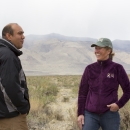Eric begins by telling us how, as a biologist at the Iroquois National Wildlife Refuge, he started working on the Partners program, working on restoring wetlands in agricultural lands near the refuge and also identifying and then doing compliance checks on FmHA conservation easements. He was one of the first refuge biologists to work on private lands outside the refuge boundary in the Service’s Northeast Region (Region 5). After four years, Eric was selected as the first Partners coordinator for Vermont when funding became available through the Lake Champlain Special Designation Act. Starting with traditional wetland restoration, the program evolved into riparian riparian
Definition of riparian habitat or riparian areas.
Learn more about riparian habitat restoration because of the amount of degraded habitat that existed on dairy farms in Vermont. That led to restoring streams and dam removal in Vermont in partnership with federal and state agencies and watershed associations. Eric describes riparian and stream restoration efforts in detail. When Eric became the New England Field Office Partners coordinator out of Concord, New Hampshire, he continued his efforts to restore aquatic connectivity through dam removal, culvert replacement, and other techniques. His projects got more and more complicated, working with even more federal, state, municipal and non-governmental organizations, leading to stream restoration, saltmarsh restoration, and wetland restoration in former cranberry bogs. These projects were multi-year planning and permitting projects. A later focus in his career were projects that aimed to provide habitat for at-risk species such as the New England cottontail and invertebrate species such as the frosted elfin and monarch butterfly. Lastly, Eric describes the schoolyard habitat program run in New England by one of his co-workers. The evolution of the habitat restoration program from simple ditch plugs to very complicated, large scale habitat restorations requiring innovative funding sources, such as Hurricane Sandy recovery money and American Recovery and Reinvestment Act money, and potentially future infrastructure money, is frankly remarkable.
Publication date
Media Usage Rights/License
Public Domain
Program
FWS and DOI Region(s)

